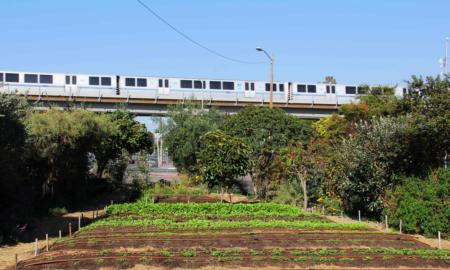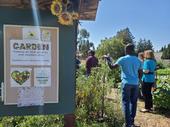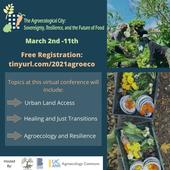Welcome!

Are you interested in starting an urban farm? Seeking details on how to raise backyard chickens and bees? Looking for information on laws, zoning and regulations that relate to urban agriculture? We offer resources on small-scale production, including soil, planting, irrigation, pest management, and harvesting, as well as information on the business of farming, such as how to market urban farm products.
After you explore the site, please complete our survey! We’d like to know if you found what you were looking for and hear your suggestions.
UPCOMING EVENTS
UC ANR Urban Agriculture Blog
Grow Your Urban Agriculture Dreams with the CDFA Urban Agriculture Grant Program - Applications Open Until October 23, 2023!
The California Department of Food and Agriculture's (CDFA) Urban Agriculture Grant Program, 2023 is an exclusive and competitive funding opportunity designed to support and elevate agriculture in urban areas across California. This one-time grant...
Growing Food & Land Access/Security with Urban and Peri-Urban Farms on Faithlands

On August 25th, UCCE's Urban Ag & Food Systems Program tabled, paneled and supported the 8th Annual Food, Faith and Farms Conference in San Rafael, CA, hosted by Interfaith Sustainable Food Collaborative. The national Faithlands Conference,...
Upcoming Agroecological City Conference to Focus on Food Sovereignty, Food Justice

What does it mean to build a just and sustainable Agroecological City? Over this past year, the pandemic, climate disruptions and ongoing harm caused by racial violence have challenged our urban communities and food systems in unprecedented ways....
UC Food and Agriculture Blogs
Controlled environment agriculture courses offered online

UC Davis Continuing and Professional Education and The VINE launch indoor farming classes A new, comprehensive and advanced learning experience in indoor farming is now available for growers. The VINE, an initiative of University of California...
New UC study estimates costs for growing coastal organic strawberries

A new study that can help growers and other readers estimate costs and potential returns for Central Coast organic strawberries was recently released by UC Agriculture and Natural Resources, UC Cooperative Extension and the UC Davis Department of...
A U.S.-China trade war would cost California farmers

Loss of China's preferred trade status could hurt crop, dairy and livestock exports The Biden administration recently announced large, increased tariff rates for Chinese electric vehicles, solar cells, semiconductors, and aluminum and steel...
Maggots in your food waste bin?

Indoor food waste bins (also known as kitchen bins or compost bins) have become a popular addition to Californian homes. They are a great way to collect food scraps and divert food waste from landfills, but they can sometimes attract pest insects like...
Emerald Ash Borer Awareness Week 2024

The emerald ash borer (EAB) may be beautiful, but it is the most destructive forest pest ever seen in North America. Hundreds of millions of ash trees across 36 states and 5 Canadian provinces have been killed by this invasive insect. Fortunately, EAB...


